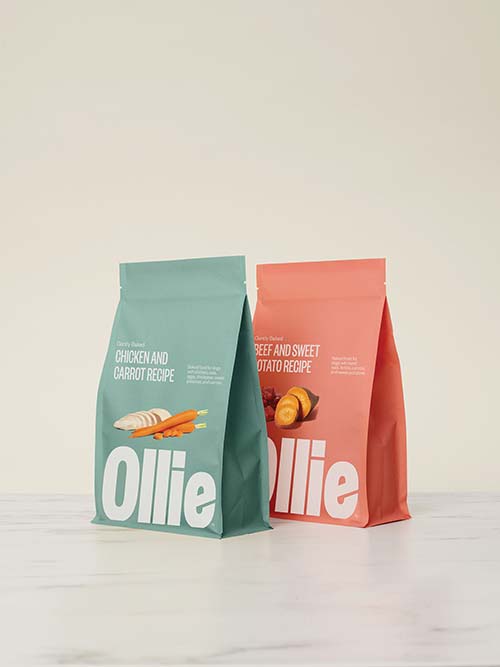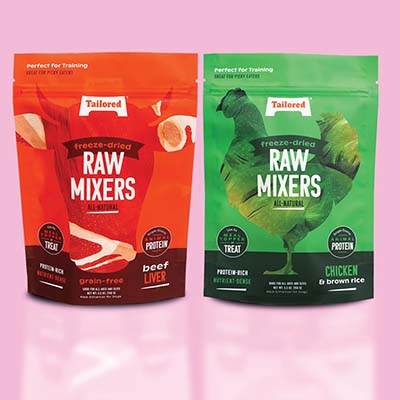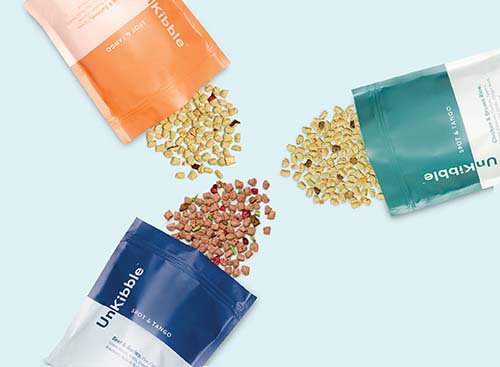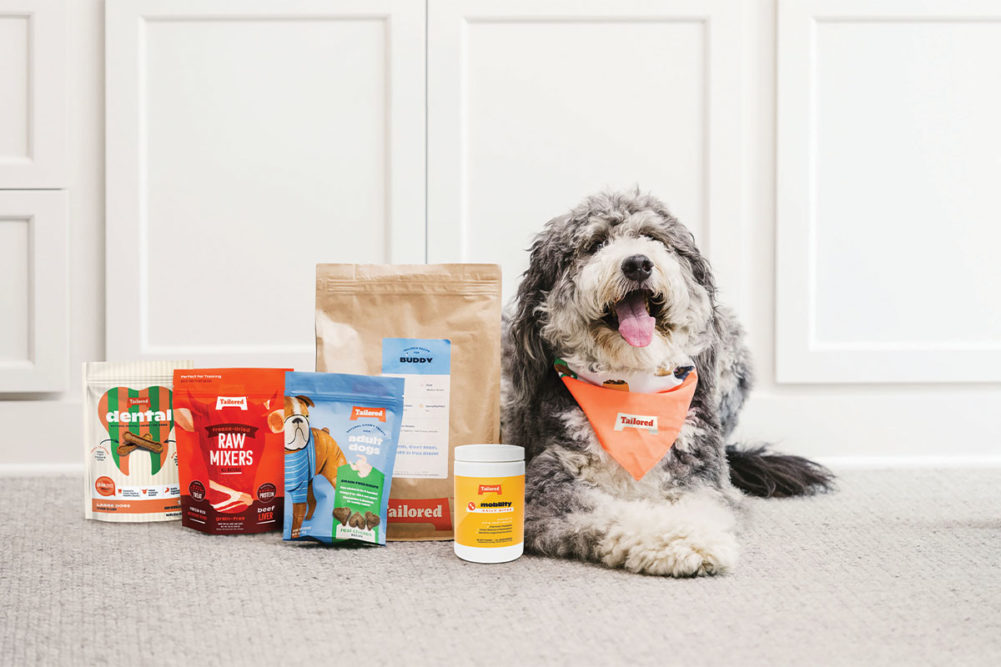This article was published in the September 2022 issue of Pet Food Processing. Read it and other articles from this issue in our September digital edition.
Pet ownership skyrocketed during the pandemic at the same time consumers were turning to e-commerce for their shopping, and both trends simultaneously contributed to significant growth in direct-to-consumer pet food subscription services.
“Many brands struggled with supply chain issues, and stores struggled with keeping products on their shelves,” said Nicole Sumner, senior brand manager for New York City-based Ollie, regarding market conditions during the pandemic. “Shopping via direct-to-consumer and utilizing a subscription-based company like ours offered greater dependability and convenience. There are many indicators that this behavior is keeping up, even though life has largely returned to normal.”
Increasing demand for doorstep delivery
About one in five American households added a pet during the pandemic, and 56% of US households now own a dog, Sumner said. With pet ownership and the humanization of pets on the rise, consumers are more willing to consider a dog food with human-grade ingredients and more likely to consider a subscription-based service, she added.
 Ollie recently launched an app that allows customers to manage subscriptions by updating frequency and delivery dates. (Source: Ollie)
Ollie recently launched an app that allows customers to manage subscriptions by updating frequency and delivery dates. (Source: Ollie)
These trends have translated into segment growth. Before the pandemic began, it was estimated that 24% of pet food sales would occur online by 2024. As it turned out, 27% of pet food sales took place online in 2020, and the new expectation is that 35% of pet food sales will be completed through e-commerce by 2024, Sumner said.
“The value proposition is really what’s drawing interest and growth,” said Russell Breuer, chief executive officer of New York City-based Spot & Tango. “That includes everything from product quality and free delivery to the personalization of our product offering. Consumers increasingly have needs, wants and desires that brick-and-mortar brands and retail can’t offer.”
Annina Silverman, chief marketing officer for Pittsburgh-based Tailored Pet Nutrition, said in addition to the convenience, the curated nature of subscription products removes the guesswork in feeding a pet and helps consumers feel confident they are choosing the right product. In addition, mainstream grocery stores don’t provide guidance and support, but these services do, said Sean McCormack, BSc, MVB, head veterinarian at London-based tails.com.
Developing a personalized product
Perhaps the biggest advantage subscription-based companies have is the consumer data they collect and their ability to use this data to quickly respond to consumer needs.
“As a direct-to-consumer company, we are able to regularly integrate customer insights into all areas of our business, ensuring that when customers share their feedback, we are actually listening and taking it into account,” Sumner said.
To provide such a personalized product, companies typically begin a customer relationship with a questionnaire about the customer’s pet and then determine the pet’s individual nutritional needs.
“We start with the basics like age, size and activity level, and then gather more details about different aspects of the dog’s health, including any ingredients the pet parent would like to avoid, and from there, recommend a recipe that is tailored to their dog’s needs,” Silverman said.
“Our goal as a brand is to make sure the consumer is heard whenever and wherever they may be and that we are responsive,” said Russell Breuer of Spot & Tango.
These services also include individualized feeding instructions, and Nom Nom Now, Nashville, Tenn., even provides a wide variety of meal sizes so pets can receive their daily needs in a single pack. Additionally, these services typically offer different cadence options for delivery.
To manage all the customer data, Breuer said Ollie has invested in several platforms and staff multiple mediums from email to SMS and voice. Ollie also recently launched an app that allows customers to manage their subscriptions by updating delivery and frequency dates and making changes to their meal plans.
“Our goal as a brand is to make sure the consumer is heard whenever and wherever they may be and that we are responsive,” Breuer said.
Silverman said Tailored Pet Nutrition informs consumers when it’s time to switch from a puppy formulation to an adult formulation, and follows up with the consumer to see if the pet has developed a new allergy or to check a pet’s progress after beginning a supplement.
“Over time, the blend automatically evolves as your dog does to ensure that we’re always providing the right nutrition no matter their life stage,” McCormack said of tails.com subscriptions.
Creating premiumization
A variety of recipes are driving the market, and Sumner said many subscription services that began by offering a single product line have now expanded their portfolios.
Spot & Tango offers UnKibble, a product Breuer describes as “fresh without the fridge,” as it allows the company to deliver the benefits of fresh food in the convenience of a dry, shelf-stable product.
 Raw Mixers from Tailored Pet Nutrition are just one of the additional product options customers can choose from within the company’s subscription plan. (Source: Tailored Pet Nutrition)
Raw Mixers from Tailored Pet Nutrition are just one of the additional product options customers can choose from within the company’s subscription plan. (Source: Tailored Pet Nutrition)
Silverman said in addition to its full-feeding diets, Tailored Pet Nutrition offers soft and chewy treats, dental chews, raw mixes and supplement bites that can be added onto a subscription.
Ollie offers fresh cooked recipes with minimal processing as well as gently baked recipes, which Sumner described as the company’s fresh take on kibble. The company also offers treats and supplements that can be added onto a subscription.
Tailored Pet Nutrition has plans to expand its functional product lines, sell toys and gifts, and to introduce products for felines. Silverman said the products target Millennial pet owners who have an interest in sustainability and desire custom products that meet specific needs.
As offerings expand, more premium options are driving the market, as the quality of products is a big reason consumers choose subscription-based services, Sumner said.
“Premiumization does not just mean that prices are rising or that products are becoming more expensive (though that is also true), but more so that brands are reacting to customer demands for quality and transparency, therefore leading to growth in premium pet food products across channels,” Sumner said.
Sumner added most traditional pet food brands don’t have expertise selling online or maintaining connections with customers. She said trends in shopping behavior, premiumization and customization bode well for subscription services, and these aspects set her company apart and are why many subscription-based brands are raising money, expanding with acquisitions and entering different channels.
“Many brands struggled with supply chain issues, and stores struggled with keeping products on their shelves,” said Nicole Sumner of Ollie.
Spot & Tango grew by more than 250% in 2021, and the company announced this spring a combined $51.75 million in funding. The company is using the funding to boost research and development and introduce new products.
Additionally, Mars Petcare acquired Nom Nom Now earlier this year and is integrating the brand within its Royal Canin division to operate autonomously. Racquel White, vice president of corporate affairs for Royal Canin, said the company is confident the Nom Nom Now acquisition will support its success in the fresh category and complement the brand’s existing portfolio.
Expanding into brick-and-mortar retail
Some of these digitally native services are even making the leap into brick-and-mortar retail. Nom Nom Now has developed an exclusive partnership with PetSmart to introduce its products in select stores.
“This enabled even retail shoppers to become aware of and try the quality of our whole ingredient nutrition,” said Rachel Porges, head of innovation, insights and channel development, Nom Nom Now.
Additionally, digitally native Jinx, Los Angeles, announced plans in March to expand into Walmart stores after obtaining $28 million in Series A funding.
Breuer said there is a duality between e-commerce and brick-and-mortar, but they will always co-exist. Independent pet food stores have significant followings, he said, however he believes many manufacturers, whose primary distribution channel is brick-and-mortar retail, don’t understand how customers interact with their products.
 Spot & Tango grew by more than 250% in 2021 and has received $51.75 million in funding to help boost the research and development of new products. (Source: Spot & Tango)
Spot & Tango grew by more than 250% in 2021 and has received $51.75 million in funding to help boost the research and development of new products. (Source: Spot & Tango)
Digitally native brands expanding into brick-and-mortar retail will also lead to some changes on store shelves.
“We will likely see freezer/fridge space growing and becoming a bigger part of stores,” Sumner said. “We will also probably see more of a focus on specialized, customized products — such as food, treats and supplements devoted to specific concerns, life stages or health needs — to reflect dog owners’ bonds with their pets and greater understanding of health needs.”
As consumer purchasing patterns continue to evolve, quick response to consumer feedback will become increasingly important across pet food brands. Subscription services are already putting this into practice as they customize their products.
“This close relationship that we have with our customers is not something that traditional retail companies are able to emulate,” Silverman said.
Find more articles about e-commerce in the pet product industry.




